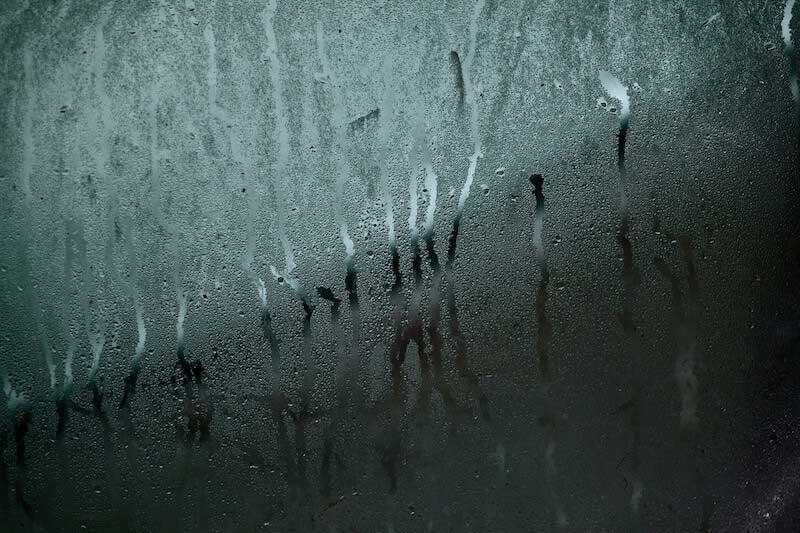When condensation on sash windows form, we need two basic conditions to be met: outside air temperature needs to be far lower than inside our home. Then, we must have a saturation of moisture(relative humidity of 75% or more) in our home.
With these two conditions in place convection can occur on high emissivity value objects such as glass and so we have condensation on sash windows.
Table of contents:
How to stop condensation on sash windows?
If you’re not interested in spending money to prevent condensation on sash windows then please continue reading and we will look at what can do to resolve or at least try to minimise condensation forming.
Convection is the method of heat transfer. When I think of heat transfer normally I’d think pots and pans on the stove, boiling water, this is conduction which is a different method of heat transfer but I am sure you’re getting the picture and there’s little need here for elementary science lessons. All we really need to know is how to prevent condensation on single glazed sash windows.
1. Installing trickle vents can reduce the condensation on our sash windows. Trickle vents are installed at the head of a window and allow directly airflow from outside. These work well as the cold air falls straight down and effectively creates a colder barrier by the glass. It’s as simple as that old trick cold air falls, hot air rises.
If you take a look at the diagram below you’ll see an example where we install trickle vents into the sash itself. This works very nicely for a tall sash; you would otherwise need to climb up each time to open and close the vent. With the installation being on the sash, we are able to pull down rather than reach up.
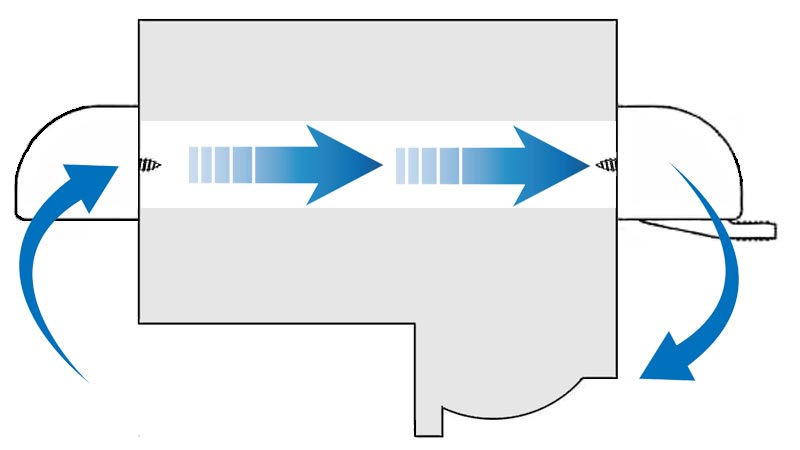
On shorter or more accessible windows it’s common to have the trickle vent installed into the head of the frame. This example can be found in the image below. Essentially what we see here is cold air streaming from the outside. This cold air then flows downwards. As we’ve already mentioned cold air falls. This helps create a barrier between the glass and hot air which in turn prevents condensation on sash windows.
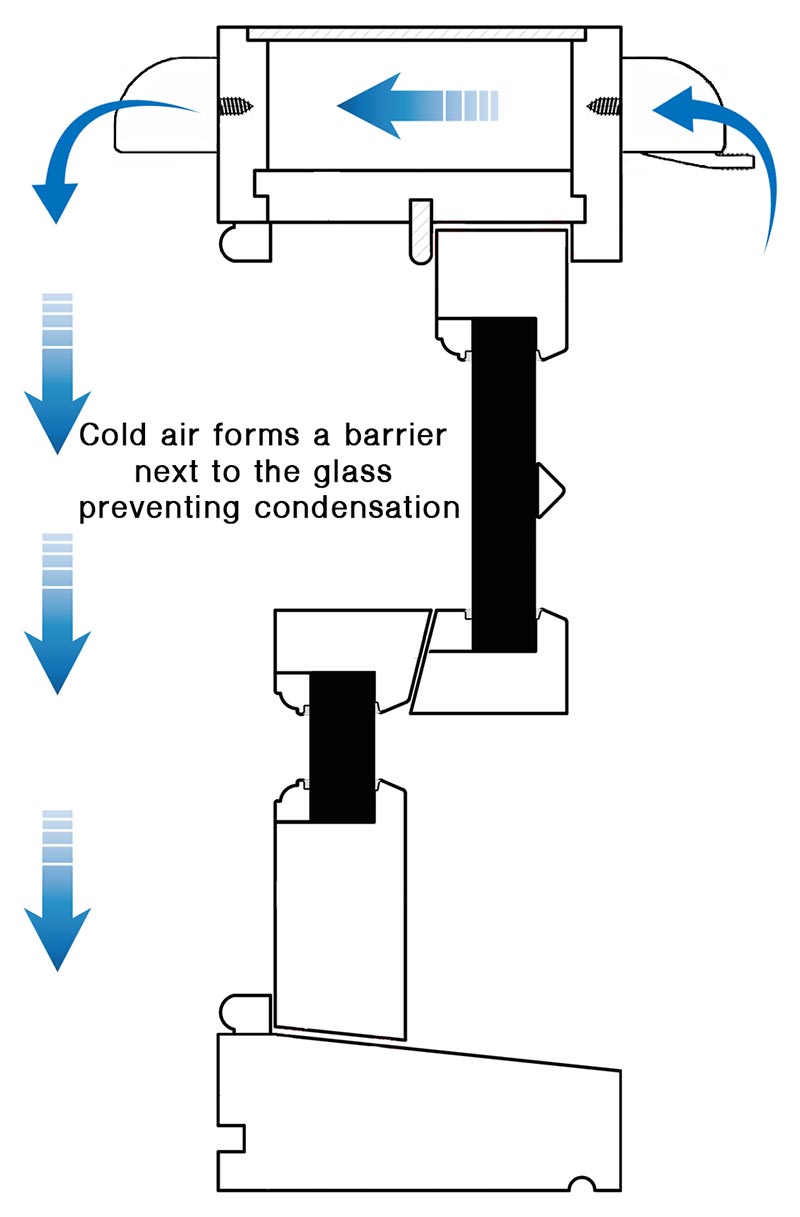
As you can see from the diagram the vent makes plenty of sense. My biggest gripe with it is the amount of effort we go to putting in perfect draught proofing just to then open and allow air in! Of course the vent can be opened as and when required.
2. Open the top of your sash window a couple of inches. This will have a similar effect to a trickle vent in that cold air will run down the glass forming a ‘barrier’ to stop warm air getting to the glass. It’s much better to open the top on a single glazed sash window as this will allow us to isolate the cold to just around the window. Of course eventually the cold will spread to the rest of the room! Be very careful if you haven’t opened the window in a while not to get it stuck.
The other issue of course is whatever soundproofing existed before will now be gone too! If you open the window entirely to remove the moisture from the air then the room temperature will need to be similar to that of the outside in order that the condensation starts to clear from your sash windows, that’s why in some cases where you know you’ll vent a room I suggest avoiding sash window draught proofing. Draught proofing isn’t bad but we really to minimise our sash window costs.
3. Remove as much moisture from the air as is possible: Avoid drying clothes in our home if possible, vent our kitchen if boiling water, saucepans of water or the kettle are the main culprits and must be vented. If this isn’t avoidable then a good way to do this is with an extractor hood on the oven, or simply one that extracts straight outside. These extractors are particularly effective in kitchens and bathrooms. We do not want the noise of one going all night in our bedroom though. Here’s a decent enough one from B & Q:
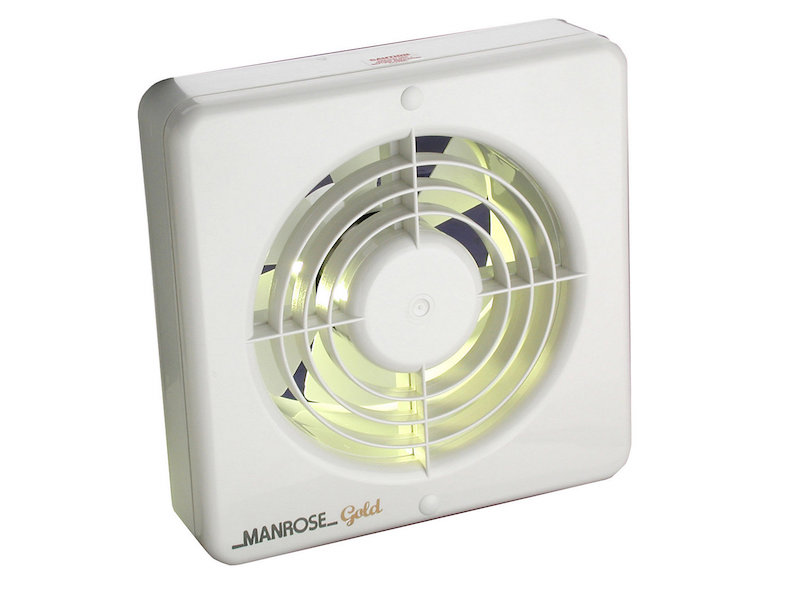
Also, we can’t help breathing in our bedroom at night. We need a shower which will result in condensation forming on our windows too. When showering, it’ll still form on double glazed sash windows as there will be a high enough saturation of moisture in the air for that too.
As we’ve pointed out single glazed sash windows are particularly vulnerable to condensation. If we’ve met two conditions in the first paragraph of different air temperatures and moisture saturation then there’s no magic solution but that doesn’t stop us attempting to minimise the issue. In some cases I’ve seen homeowners who accept the issue will occur and simply place towels on their lower rails so as the moisture runs down the glass. It’s then collected and does not do so any damage to the timber or paintwork to unnecessary sash window repair costs.
Condensation on double glazed sash windows
Condensation on double glazed sash windows might not just be from moisture content in the air. Is your double glazing misted up? This is a different thing entirely. The double glazed unit has broken down and is no longer functioning correctly. A hole or crack has developed in the material used to bind both pieces of glass and allowed air to flow in. This has carried the moisture and the result is a unit that ‘blown’.
Different air temperatures cause the gas inside a double glazed unit to expand and contract. When a unit is cold the air shrinks, being a vacuum it’ll pull the panes of glass together, if it’s hot the gas expands and pushes the glass away. I think this is much better explained in the form of a diagram:
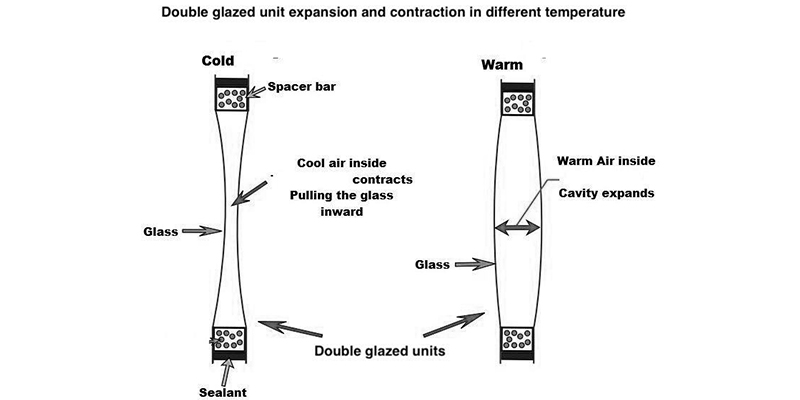
Condensation on double glazed sash windows is also a direct result of heavy moisture saturation and the room must be vented. This much moisture is not healthy and will result in mould growth. Normally you’ll find condensation on double glazed sash windows in the bathroom and kitchen. Occasionally you’ll get a little condensation forming in the bedroom. That said, when a double glazed unit is Argon filled and low emissivity glass is used then it’ll be very minimal. The improvement will be dramatic.
Double glazed sash windows to stop condensation
If your fed up with wiping down water from your sash windows and it’s peeling the paint and causing rot in the wood then I’d suggest double glazing as the best cure as a paid for method. If you’re just looking for a solution that keeps the room you’re in warm whilst preventing condensation, then head over to our double glazing sash windows page.
We manufacture sash windows with double glazed units that are Argon or Krypton filled with Pilkington’s low emissivity glazing technology. There are quite a few ways of handling double glazing without entire replacement.
Are your bedroom sash windows are completely saturated in the morning?
So by this I mean your sash windows are dripping wet. Sash window double glazing will reduce this to a minimum. In most cases, it’ll stop the condensation on sash windows forming entirely. Just take a look at what out clients say about our sash windows.



